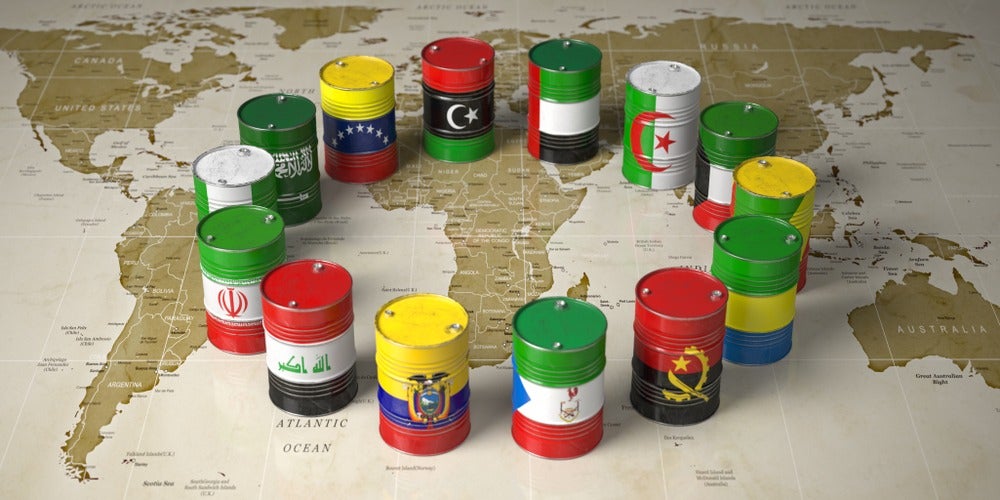Increased supply risks in Iran, Libya and Venezuela have sparked concern across oil markets in recent weeks.
After the US government’s announcement that it would not extend waivers for importers of Iranian oil, President Trump called on Organization of the Petroleum Exporting Countries’ (OPEC’s) other producers to boost supply.
Opec supply 2019
Saudi Arabia has spare capacity, and Iraq and Abu Dhabi (which provides most of the United Arab Emirates’ output) also have a number of major developments ongoing, which should boost their combined supply potential in the next few years. However, in the largest potential shock scenarios, balancing supply could push the countries’ capacities to their limits.
Iranian and Venezuelan production has already declined by over 40% compared to 2017 levels and could fall further, with the conflict in Libya presenting additional supply risk. Having already faced output reductions of around 1 million barrels per day (mmbd), with the re-imposed US sanctions that took effect on the oil sector in November, Iran now risks losing a market for its remaining exports of a little over 1 mmbd.
Figure: OPEC production by Country, 2017 – March 2019

Source: OPEC
Note: mbd – thousand barrels per day
How well do you really know your competitors?
Access the most comprehensive Company Profiles on the market, powered by GlobalData. Save hours of research. Gain competitive edge.

Thank you!
Your download email will arrive shortly
Not ready to buy yet? Download a free sample
We are confident about the unique quality of our Company Profiles. However, we want you to make the most beneficial decision for your business, so we offer a free sample that you can download by submitting the below form
By GlobalDataSaudi Arabia’s production dips below 9.8 mmbd in March 2019 against to its 10.3 mmbd target. Compared to its reported maximum sustainable capacity of 12 mmbd, this suggests that it has the capacity to balance out 2.2 mmbd of supply disruption. However, whether this could be achieved in practice is not certain, as the country’s maximum production achieved was just under 11.1 mmbd in November 2018.
Iraq and the UAE have not imposed significant cuts, with output having stayed relatively stable over the past two years. Additionally, a number of developments in Abu Dhabi should provide at least 200 mbd of extra capacity in the next two years.
Given the significant levels of available capacity, OPEC will be able to balance out most possible supply shocks in Iran, Libya and Venezuela. However, despite their likely desire to increase market share, there is some risk that Saudi Arabia, Iraq and the UAE may act cautiously in increasing supply due to fear of precipitating price drops that may harm government revenues. Additionally, although new capacity is on the horizon that may limit future supply risk, the sharpest possible supply shocks may still stretch capacity to the limit if they occur in the near term.






Related Company Profiles
Organization of the Petroleum Exporting Countries